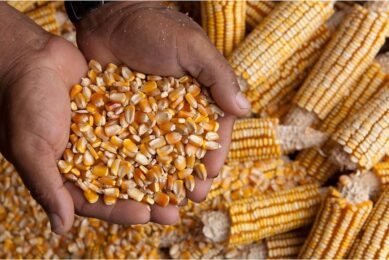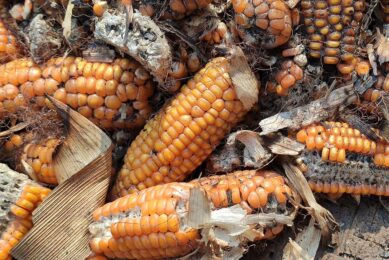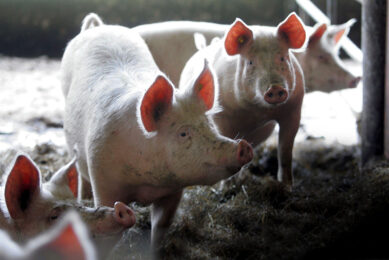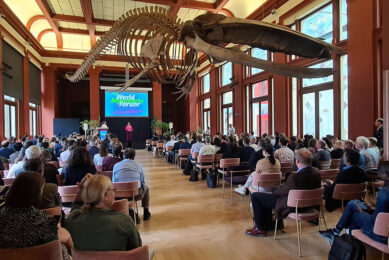What’s the truth behind the FAO’s 25%?

The percentage of crops contaminated with mycotoxins is mostly based on estimations. The FAO statistic that 25% of agricultural crops are contaminated with mycotoxins is still widely cited, but does it still hold true?
The Food and Agriculture Organisation (FAO) estimated decades ago that about 25% of agricultural crops world-wide are contaminated with mycotoxins. These toxins are secondary metabolites of fungal species (for example Aspergillus, Fusarium and Penicillium spp.) that contaminate, among others, cereals and nuts in the field and during storage. Mycotoxins are extraordinarily stable, often surviving the production process (including baking) and thus make it into the finished product, where their exposure poses a serious threat to animal and human health. For example, Aflatoxin B1, commonly found in peanuts and pistachios, but also – due to climate change – increasingly in maize from Southern Europe, is one of the most potent natural liver cancer-causing toxins.
Delivering safe feed
Global trade and mycotoxins are closely intertwined. Millions of tons of cereals and other food products are shipped across the globe every year, and so are mycotoxins transported with contaminated agricultural products. The numbers are impressive: Compound feed production (80% of all feedstuffs sold in the EU) was 153 million tonnes in the European Union for 2014, with global production of 964 million tonnes. Keeping these feedstuffs safe for consumption is a major undertaking for all stakeholders involved.
Specific attention for six mycotoxins
From a consumer-health, trade and regulatory perspective it is interesting to ask what percentage of agricultural commodities is contaminated with mycotoxins in order to determine the resources required to protect animals and humans. How many checks need to be administered as cereals move from farm to table? From a regulatory and health perspective six mycotoxins have received specific attention: Aflatoxins, Deoxynivalenol, Zearalenone, Fumonsins, T-2 and HT-2 toxins and Ochratoxin A. For these compounds, regulations were enacted in the form of legal limits and guidance values by the EU and their international counterparts (see Table 1).
The unknown origin of the 25%
Given the widely cited 25% FAO estimate, it is surprisingly difficult to track down the original source. In fact, the original FAO report does not seem to exist at all, while the “25%” were, and are, cited on numerous occasions in scientific literature, by food safety authorities, at conferences and in magazines. With the unavailability of an original report, details of the calculation procedure and thresholds employed are not available either.
Limit of detection
Over the last decades our knowledge about mycotoxin compounds, their toxicity and the methodology to detect them has improved considerably. This has provided important data about occurrence and health impacts to legislators. Specifically, the ability to detect very small quantities, called the limit of detection (LOD), has improved by several orders of magnitude, because of technological improvements. Today minuscule amounts in the range of 10-10 grams per gram of sample can be detected, which allows researchers to assess chronic exposure of small amounts of mycotoxins in animals and humans. Very low concentrations are frequently found in food and feed samples and provide information about worldwide occurrence of toxins as well as information for low-level exposure of one or several toxins present in the sample to study associated health impacts.
With the exception of Aflatoxin B1, legal limits are typically several orders of magnitude higher than limits of detection
Legal limits and guidance values on the other hand are prescribed to avoid serious and immediate adverse health effects. These are defined and revised based on scientific studies. Because of their specific physiology, maximum allowable or recommended concentrations vary greatly for humans and different animal species. With the exception of Aflatoxin B1, legal limits are typically several orders of magnitude higher than limits of detection. Which limit the original FAO 25% estimate refers to is unknown. An investigation regarding both limits is, therefore, advisable and assess worldwide contamination frequency and health impacts.
What does the scientific literature say?
Recent reports from large-scale analyses of feed samples published in 2013, 2016 and 2017 indicate high contamination rates with mycotoxins detected in up to 85% of several thousand samples from all over the world. This suggests that the presence of mycotoxins is almost universal, though at typically low concentration levels.
Asian and African countries highly affected
Risk assessments of the Joint FAO/WHO Expert Committee on Food Additives (JECFA) over the last few years came to similar conclusions reporting high occurrence rates obtained from a wealth of studies: Aflatoxins were found in 20-55% of samples, while for fumonisins, deoxynivalenol and zearalenone occurrence rates are generally higher and toxins were found in up to the mentioned 85% of samples. Occurrence varies with geographical origin with Asian and African countries being highly affected. It can be speculated that agricultural products destined for export are generally better screened, leaving more contaminated crops for home markets.
High variability of mycotoxin concentrations
A caveat is the high variability of mycotoxin concentrations in samples, which is mainly due to the inhomogeneous distribution of fungal contamination and mycotoxin amounts. Fungi and toxins proliferate in hotspots, where temperature and humidity favour fungal growth, but extremely high concentrations render the whole batch unsuitable for consumption resulting in high losses. Furthermore, sampling procedures are rarely standardised potentially leaving a large margin of error associated with results.
What do the data say?
The European Food Safety Authority (EFSA) collects data from official food and feed sample analyses from EU member states following standard international practice. Data collected by EFSA provides a rich source to assess EU-wide mycotoxin contamination. Results likely represent a lower limit of contamination since most samples submitted for regulatory analysis were likely tested beforehand and highly contaminated batches already removed through in-house screening. EFSA results indicated contamination rates of up to 80% using the LOD threshold, in line with previously published studies. The number of samples contaminated with concentrations near the lowest guidance limit for feed were a lot smaller with around 20%.
A second data set composed of feed samples data was obtained from Biomin Inc. These are results from unscreened samples delivered directly by farmers and destined for use as animal feed. Results were similar with up 80% of samples contaminated with one or more mycotoxins using the LOD threshold. Typically, 20% of samples were contaminated above the EU lower regulatory level with lower contamination levels (< 10%) for food-grade grain samples.
Confirmation
Comparing the FAO 25% estimate to values above EU limits would appear to confirm the original estimate. But overall, detected mycotoxins show high occurrence across the globe with up to 80% of samples containing one or more toxins. Co-exposure and synergistic effects from the exposure to low-contaminated crops need to be studied further to assess long-term health impacts.
The impact of climate change
While improved analytical methodology has likely increased detection rates leading to more positive samples, another factor that must not be overlooked is climate change. Atmospheric warming and associated meteorological changes are predicted to generally increase the amounts of mycotoxin-contaminated crops and changes to the toxins make-up and frequency.
This article is a summary of the paper ‘Worldwide contamination of food-crops with mycotoxins: validity of the widely cited ‘FAO estimate’ of 25%’ published in the journal ‘Critical Reviews in Food Science and Nutrition’ authored by Mari Eskola, Gregor Kos, Christopher. T. Elliott, Jana Hajšlová, Sultan Mayar and Rudolf Krska.
 Beheer
Beheer





 WP Admin
WP Admin  Bewerk bericht
Bewerk bericht